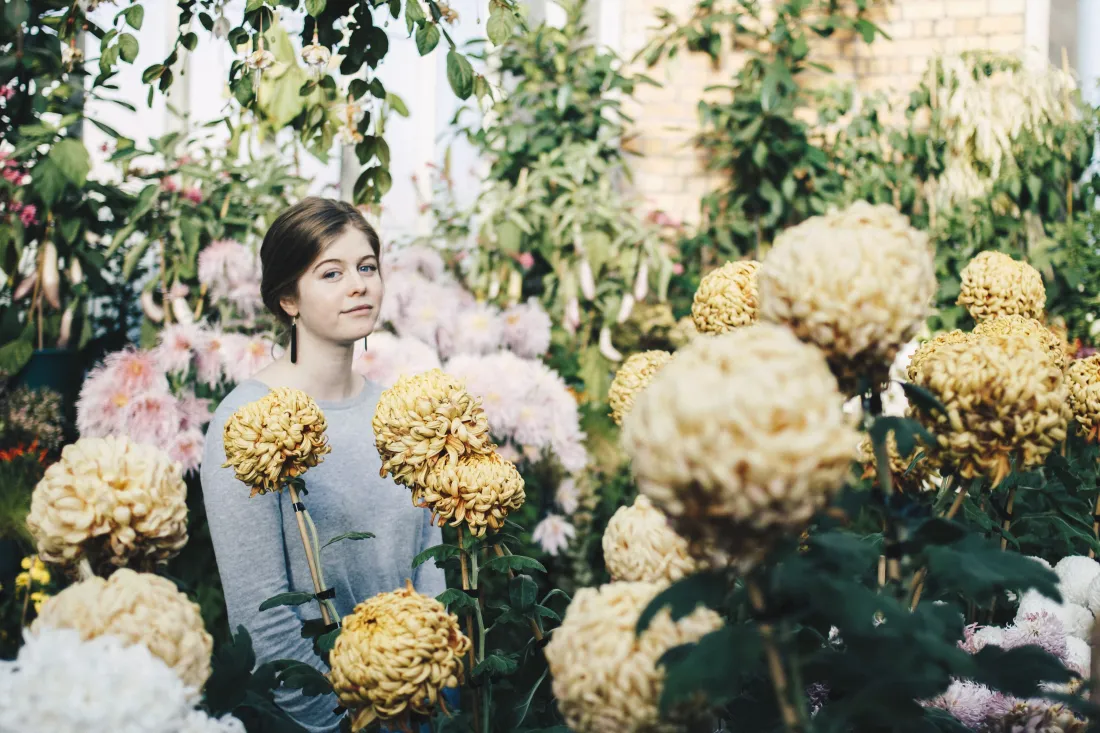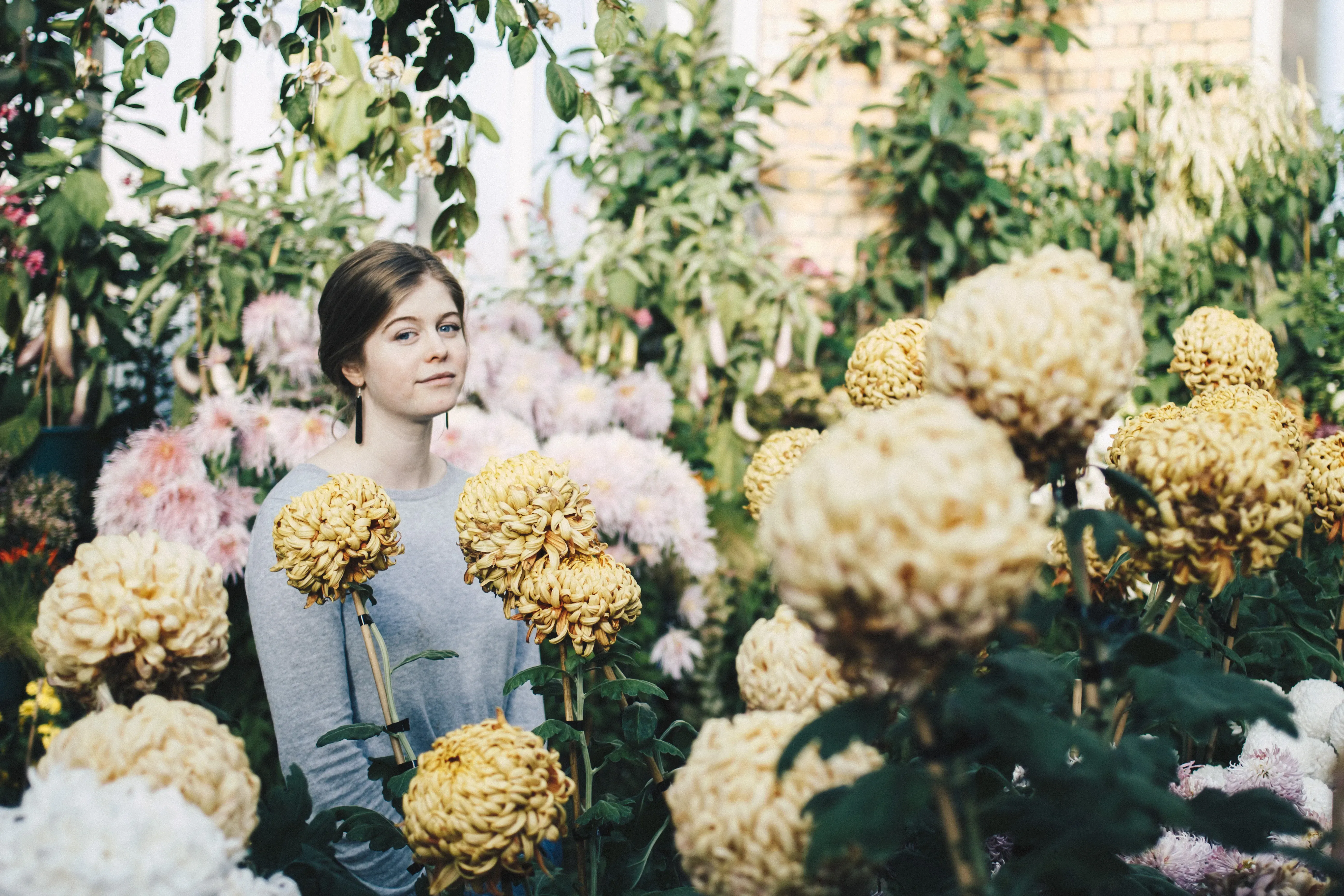Harriett Maire: Reaching for the moon
Written by


Young filmmakers, Harriett Maire and Ferris Bradley have been reaching for the moon and their hard work has been rewarded at Cinespace - a new short film competition created by NASA and the Houston Cinema Arts Festival. Of the 900 entries to this Festival, these two made it down to the final 15, with their short film Lani’s Space winning a special category award for Film Best Depicting Benefits to Humanity from the International Space Station. Lani’s Space, tells a heartening yet heartbreaking story about a father trying to understand his daughter’s love of space. We interview one of the filmmaker duo, Harriett Maire about her journey as a young filmmaker.
“For me, films are all about human connections. That’s at the heart of every story I enjoy. The world is made up of an infinite amount of tiny connections between people, and I love films that reflect that, no matter how big or small that connection may be.”
As soon as Harriett read the regulations for the CineSpace competition, the idea for Lani’s Space came to her immediately. The film required 10% stock NASA footage and had to be space themed. She combined these specifications with her personal desire to tell a story that brought to life a father/daughter connection and Lani’s Space was born. “I’m an only child, and I wanted to communicate a relationship between father and daughter that was full of love and understanding.” Harriett’s father has been a big influence on her filmmaking aspirations. He is a cinematographer and Harriett grew up visiting him on sets since she was just a baby. “It’s in my blood. It’s difficult not to get the filmmaking bug when you’re exposed from such a young age!”
Harriett and Ferris currently work together at a production company, Film Construction. It was 34 days out from the deadline when they spotted the call to entries for the CineSpace competition. They were fortunate enough to receive backing from Film Construction who allowed them to effectively stop work on their current projects, gave them a production space to work from and free reign on all the gear. This was a solid starting point. From there Harriett says, “it took a lot of work, and the time pressure was a great motivator.”
Key to achieving this tough goal was also the amount of support, skills and dedication that came from their families. Harriett was the scriptwriter and director for Lani’s Space, and Ferris was the producer and music director. Outside of those two it was a full family affair.
“The work largely boiled down to a family unit. Ferris’s dad did all the sound mixing and his mum did our beautiful art direction. My dad filmed it for us, and my mum was the wonderful caterer on set. It was so lovely going into a project with a short timeframe knowing we had this tightknit family team around us.”
Perhaps this family make up played its part towards creating a film that would touch anyone - a truly moving portrayal of the unconditional love of a father for his daughter. There is a sort of melancholic undertone that fills you with a sense of hope as you watch unfold in front of you a beautiful relationship between dad and daughter. This portrayal of raw emotion, something that leaves the viewer feeling both slightly mournful and yet inspirited at the same time, Harriett believes is common in New Zealand films and is inspired from landscape.
“There’s something about the landscape ... in New Zealand that creates people that make a very specific type of film. I read an essay once about how the New Zealand landscape feeds into the melancholic, bittersweet films that come out of this country like The Piano, Whale Rider and Boy, and that really resonated with me. The West Coast of New Zealand in particular has a raw, dangerous energy which feeds into our psyche as filmmakers. I like to think that that plays a part in my little short films as well.”
At just 22, this is not Harriett’s first taste of international recognition for her work. Harriett completed a Bachelor of Communications at AUT, majoring in Television and Screen Production in 2015. Her short film ANNA, based around the everyday life of a young woman with autism, won the Jury Choice Award at the Diversity in Cannes Festival. This was her final year university project. Having this well-recognised short film under her belt, combined with her determination and willingness to work hard, was what she needed to get her first job in a production company.
“I graduated university at the end of 2015 with one short film, ANNA. I went to Film Construction with nothing but that, and the assurance I was hungry to learn more about the craft. Film Construction created an intern role for me that lasted a year, before promoting me to a junior director.”
This has been an invaluable opportunity for Harriett. When she is not directing, she can be found working on the production side of every job that comes through Film Construction and really values the broad spectrum of experience that she gets there. “I believe that has been hugely beneficial to me, as it has provided me with such a holistic understanding of the industry.”
Her personal determination to get the experience she needs to get ahead in the film industry is visible in the advice that she offers other young hopeful filmmakers. “Try and get on a set – even if it’s just to make coffees or clean up rubbish or help to put out cones. The best way to learn about the film industry is to be in it, and study how a set works.”
She has also learned the importance of asking questions. It took time for Harriett to build up the confidence to admit when she was unsure of a film term or a piece of equipment. It came as a relief when she learned that people actually want to help. “People are so kind and giving and they want you to do your best, so if you go into a job with an open, inquisitive mind and a hunger for knowledge, people will help you as much as they can.” She says she is looking forward to when that comes full circle and she can offer the same support that she has received to young filmmakers.
The recipe of being prepared to work hard combined with a willingness to do any job that helps her learn has worked well for Harriett, but she also carries a certain gutsy-ness that has contributed to her success at such a young age. In creating Lani’s Space, she knew that one of her filmmaking heroes, Richard Linklater, was going to be judging the finalists work. She decided to communicate with him through the film, just in case it made it to the final judging round. “I thought I’d be cheeky and slip in some references to his own films, just in case he should end up watching ours. So there is a scene in a video shop that features The School of Rock and Dazed and Confused in two consecutive shots. I wanted him to know that I love his work, and I thought this was probably my best chance at communicating it to him.”
Her biggest piece of advice to other young filmmakers is to always keep making work and remember that it takes a lot of hard work to make something that is good. “Even if it’s not the best, even if it isn’t polished, it’s the only way to grow your experience and your ability. I have to remind myself that the first draft of my films is never good, and that it takes focus and practice and a lot of brainpower to get a project to a point where you’re truly proud of it.”
Official Lani's Space website, Harriett Maire Showreel